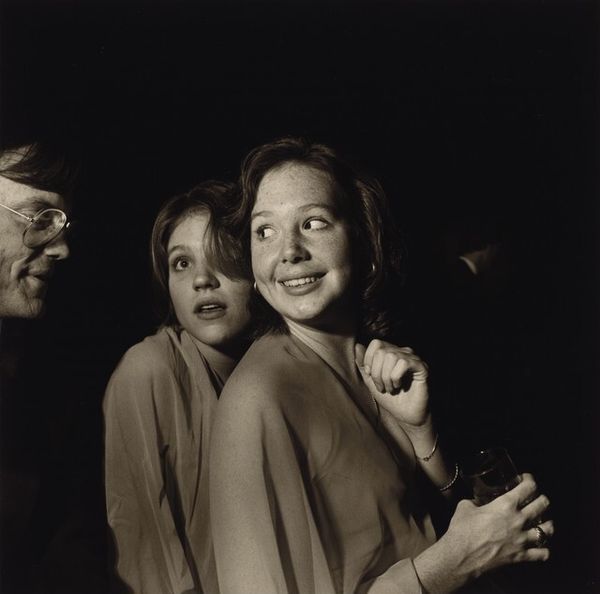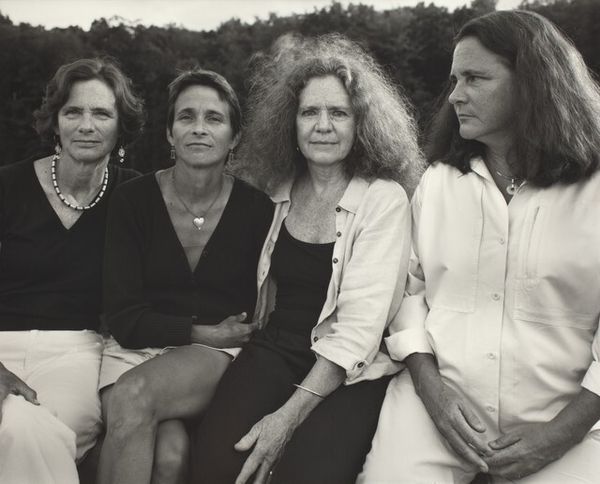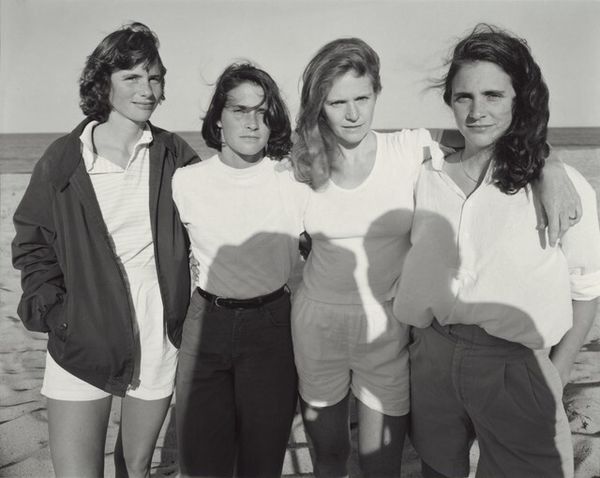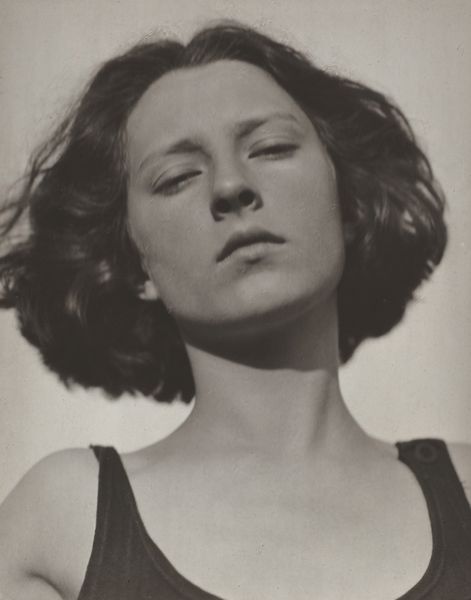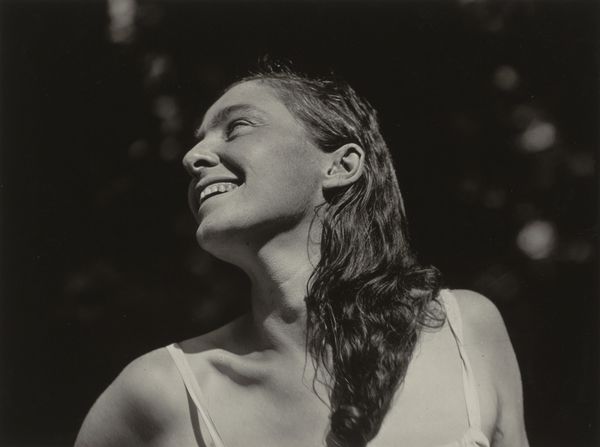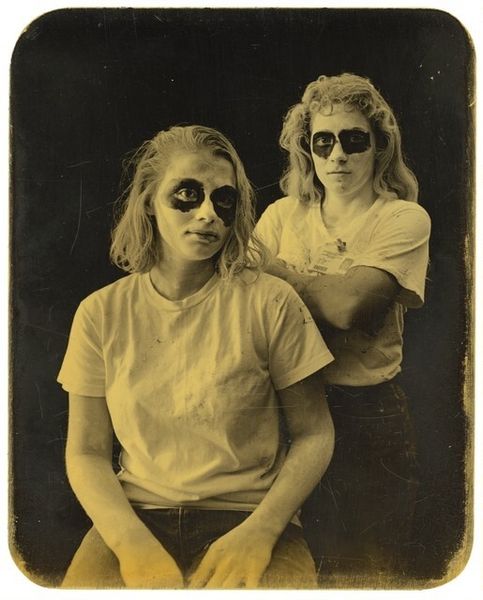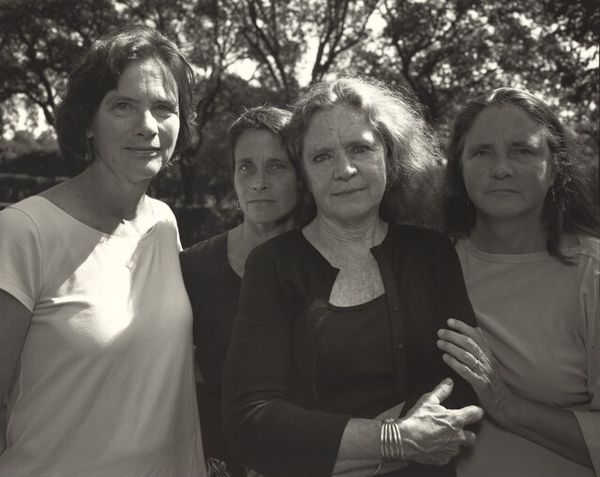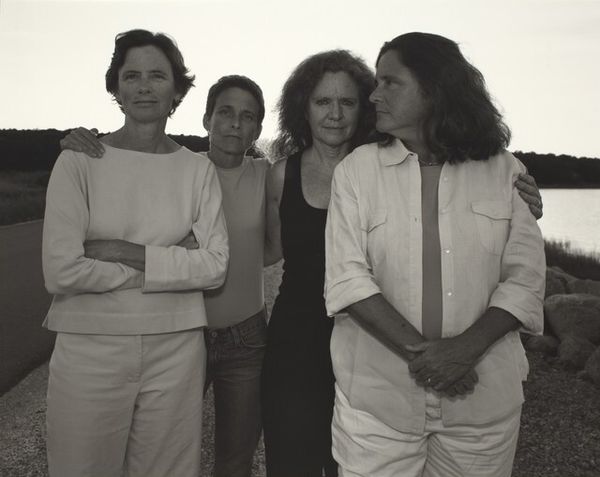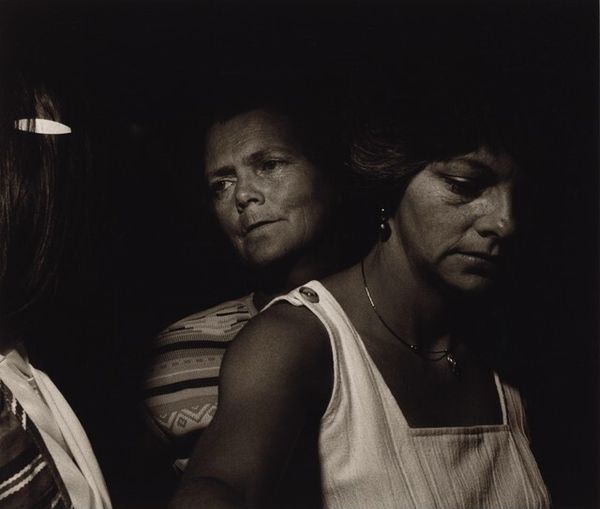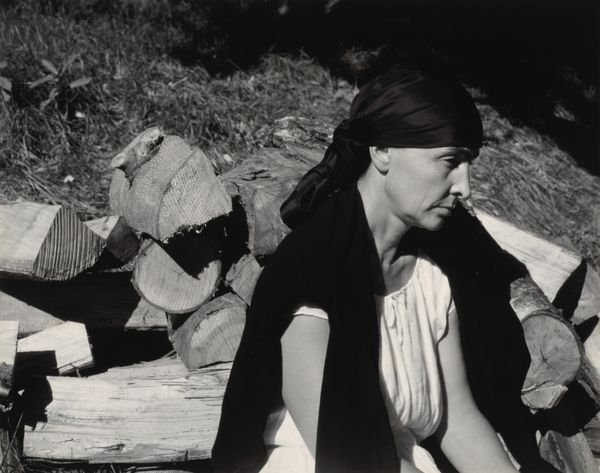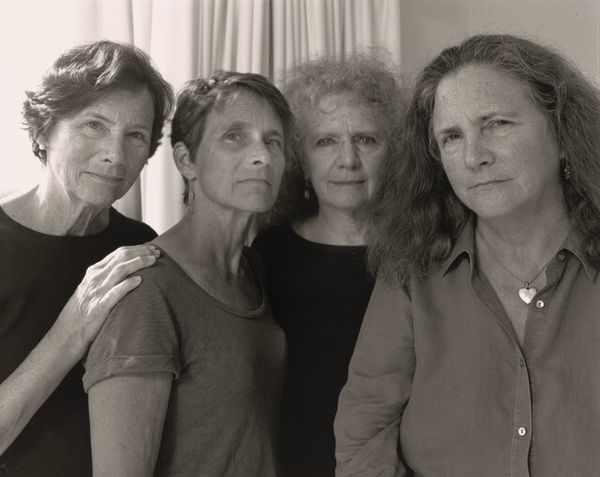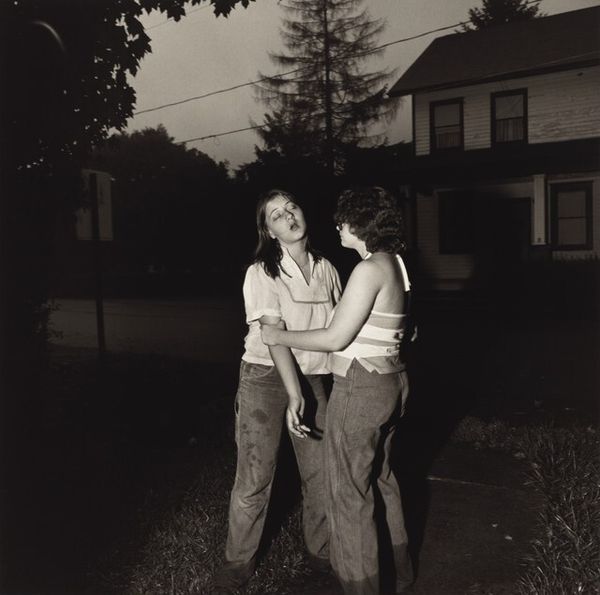
Dimensions: sheet (trimmed to image): 8.5 x 11.2 cm (3 3/8 x 4 7/16 in.) mount: 31.7 x 24.9 cm (12 1/2 x 9 13/16 in.)
Copyright: National Gallery of Art: CC0 1.0
Curator: Alfred Stieglitz's photograph, "Georgia Engelhard and Margaret Treadwell," taken in 1921, offers a captivating glimpse into the artist's milieu and the evolving representation of women in the early 20th century. Editor: My immediate reaction is about the stark contrast of light and shadow. The women appear to emerge from the darkness, almost like sculptures hewn from ebony. The soft focus creates this incredibly tactile surface. Curator: I agree, and think the way Stieglitz uses Pictorialism aligns with Modernist experimentation. We must remember Stieglitz's fight to have photography recognized as fine art; understanding that he employed techniques akin to painting or drawing gives insight into the socio-political landscape around art production. Editor: Exactly. Thinking about process, gelatin silver prints such as this one, afforded Stieglitz tremendous control over the tonal range. The dark shadows and luminous skin tones create a dramatic effect. I wonder what paper stock he chose here. Curator: It's a pertinent question, because understanding how materials create the mood deepens our understanding. The subjects’ dark bathing suits and carefree postures defy the hyper-feminine imagery of the time. You can definitely situate them within the broader narratives of the “New Woman” who was emerging. Editor: The flower, possibly a daisy, one woman is holding: It contrasts in its pure simplicity with the complexity of everything else in the image. Thinking materially, one can imagine what those petals feel like juxtaposed with the smooth cotton of those swimsuits. Curator: Absolutely. That flower presents so much symbolic tension. I'm struck how that object in their hands could be a metaphor for the burgeoning freedoms of women at the time and also remind the viewer how precarious their societal standing truly was. Editor: Looking at this piece through a materialist lens really enriches our understanding. Thinking about the social conditions of both making the art and receiving it frames the whole enterprise so nicely. Curator: I agree. Reflecting on the social context informs us so much about the aesthetic decisions. Editor: Seeing art from the perspective of those who are engaging in creating its materiality gives such insight.
Comments
No comments
Be the first to comment and join the conversation on the ultimate creative platform.
